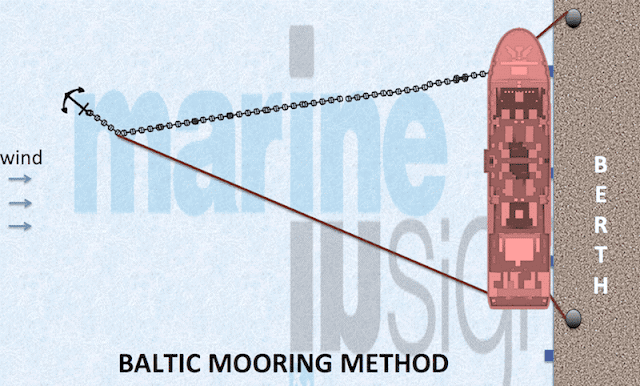#23.How Baltic Mooring of Ship is Done?

What happens when there is a strong onshore wind and you have to berth a ship without the assistance of tugs to a pier or jetty that is not strong enough to bear the impact or is not sufficiently ‘fendered’? In such a situations, the master or the pilot takes the recourse of using the ship’s anchor as well as the wires available on board in a specific way to minimize the impact of the fall. This is done by mooring ship in such a way where a vessel is berthed alongside the quay by employing a stern mooring shackled to the offshore anchor cable in the region of the ‘ganger length’. When approaching the berth, the offshore anchor is deployed and the weight on the cable and the stern mooring act in unison to hold the vessel just off the quay. Baltic mooring is a combination mooring of a vessel alongside the berth which employs a stern mooring shackled to the offshore anchor cable in the region of the “ganger length”. When approaching the berth, the offshore anchor is deployed and the weig


